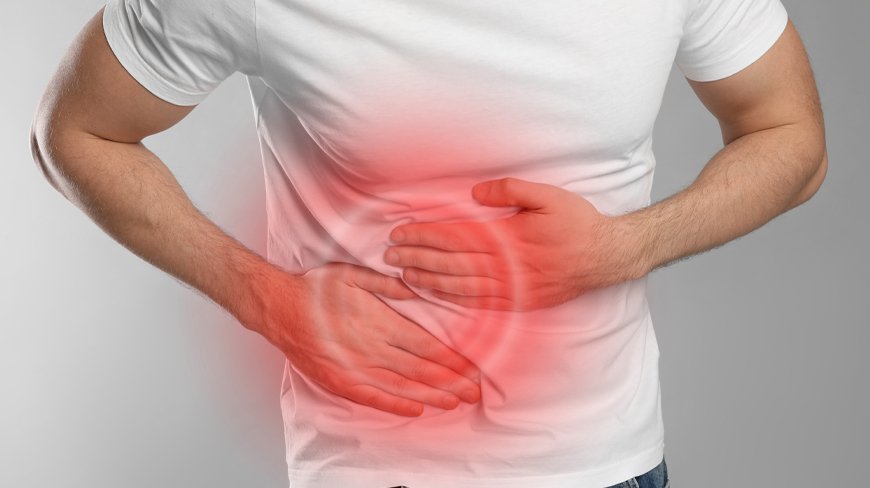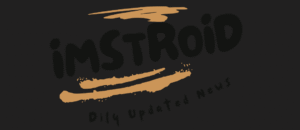Darmstiche, a German term that translates to “intestinal stitches” or “sharp abdominal pain,” is a type of discomfort often felt as a stabbing pain in the abdominal region, usually originating from the intestines. This term is commonly used in medical contexts to describe a variety of gastrointestinal issues, but it can also be associated with other underlying conditions that manifest in similar pain sensations. The pain may vary in intensity, ranging from mild discomfort to severe distress, and can be intermittent or constant, depending on the cause.
This article aims to provide a comprehensive understanding of darmstiche, including its causes, symptoms, possible diagnoses, and available treatments. By examining these aspects in detail, individuals can better identify when to seek medical help and understand how to manage or prevent such abdominal pain.
What is Darmstiche?
The term “darmstiche” refers to sharp, stabbing, or cramping pain in the abdomen that primarily originates from the intestines. While the name itself is specific to German-speaking regions, the condition it describes is not unique to any particular country. In fact, this type of pain is common across the globe and is often associated with gastrointestinal (GI) issues.
Darmstiche may be caused by a variety of factors, including gastrointestinal conditions like bloating, constipation, food intolerance, or more serious conditions such as gastrointestinal diseases and infections. Understanding the characteristics of this pain, as well as what triggers it, is important in diagnosing and addressing the problem effectively.
Common Causes of Darmstiche (Sharp Abdominal Pain)
There are numerous causes of darmstiche, each with its unique symptoms and underlying mechanisms. Some of the most common causes include:
1. Gas and Bloating
One of the most common causes of sharp abdominal pain is excess gas in the intestines. This can lead to bloating, distension, and discomfort. The pain typically arises when gas builds up in the intestines and causes the walls of the intestines to stretch or spasm.
-
Symptoms: Distended belly, cramping, pain that worsens after meals or in the evening.
-
Triggers: Certain foods like beans, cabbage, or carbonated beverages can increase gas production.
2. Irritable Bowel Syndrome (IBS)
IBS is a chronic gastrointestinal disorder that often results in cramps, bloating, diarrhea, and constipation. Many individuals with IBS experience stabbing or cramping pain in the abdominal area, which may be described as darmstiche. The pain is usually relieved after bowel movements, although this can vary from person to person.
-
Symptoms: Abdominal cramps, changes in bowel habits (diarrhea, constipation), bloating.
-
Triggers: Stress, certain foods, hormonal changes.
3. Food Intolerances and Allergies
Intolerances to specific foods, such as lactose intolerance or gluten sensitivity, can lead to sharp, stabbing abdominal pain. When the body cannot properly digest certain foods, it can cause bloating, discomfort, and pain. This pain may present as darmstiche, especially after consuming foods that the body is unable to tolerate.
-
Symptoms: Abdominal cramps, bloating, diarrhea or constipation, nausea.
-
Common Triggers: Dairy products (lactose intolerance), wheat and gluten (celiac disease or non-celiac gluten sensitivity).
4. Gastroenteritis (Stomach Flu)
Viral or bacterial infections, often referred to as gastroenteritis, can lead to sharp abdominal pain. In addition to the stabbing pain, individuals may experience nausea, vomiting, diarrhea, and fever. The infection usually causes inflammation in the stomach and intestines, contributing to discomfort and pain.
-
Symptoms: Nausea, vomiting, diarrhea, fever, cramps, and abdominal pain.
-
Triggers: Contaminated food or water, close contact with infected individuals.
5. Diverticulitis
Diverticulitis occurs when small pouches (diverticula) that form in the walls of the colon become inflamed or infected. This condition can cause sharp, stabbing pain, especially in the lower left side of the abdomen. Diverticulitis is often accompanied by fever, bloating, and changes in bowel movements.
-
Symptoms: Severe abdominal pain (often in the lower left abdomen), fever, constipation, nausea.
-
Risk Factors: Age, low-fiber diet, obesity.
6. Appendicitis
Appendicitis is an inflammation of the appendix, a small pouch attached to the large intestine. If untreated, appendicitis can lead to the rupture of the appendix, which is a medical emergency. The pain usually begins around the navel and then shifts to the lower right abdomen, often described as sharp and sudden.
-
Symptoms: Sharp, localized abdominal pain (usually on the lower right side), nausea, vomiting, fever.
-
Risk Factors: Common in individuals between the ages of 10 and 30.
7. Gastroesophageal Reflux Disease (GERD)
GERD is a chronic digestive condition where stomach acid flows back into the esophagus, leading to heartburn and discomfort. Though GERD typically causes chest pain, it can also result in abdominal pain that can be sharp or stabbing, particularly after meals.
-
Symptoms: Heartburn, chest pain, regurgitation of food, bloating, sharp abdominal pain.
-
Triggers: Fatty foods, chocolate, caffeine, alcohol, large meals.
8. Gallstones
Gallstones are hardened deposits that form in the gallbladder and can block bile ducts, causing pain. The pain is usually felt in the upper right abdomen and can be sharp and intense, often referred to as biliary colic. This condition can lead to further complications, including infections and inflammation.
-
Symptoms: Severe upper abdominal pain, nausea, vomiting, indigestion.
-
Risk Factors: Obesity, high-fat diet, older age.
9. Peptic Ulcers
Peptic ulcers are sores that develop on the lining of the stomach or the first part of the small intestine. These ulcers can cause sharp, burning abdominal pain that may be described as darmstiche, especially when the stomach is empty or after eating acidic foods.
-
Symptoms: Burning stomach pain, bloating, nausea, indigestion.
-
Risk Factors: H. pylori infection, overuse of NSAIDs (non-steroidal anti-inflammatory drugs), smoking.
When Should You Seek Medical Attention?
While mild cases of darmstiche or sharp abdominal pain may resolve on their own, there are certain instances when medical attention should be sought. If the pain is severe, persistent, or accompanied by other symptoms such as fever, vomiting, or changes in bowel habits, it’s important to consult with a healthcare professional.
Red Flags to Look Out For:
-
Severe, unrelenting pain: Pain that doesn’t subside or worsens over time.
-
Fever and vomiting: This could indicate an infection or a more serious condition like appendicitis or gastroenteritis.
-
Bloody stools or vomiting: This could be a sign of a gastrointestinal bleed.
-
Rapid weight loss or dehydration: This may indicate a chronic condition like diverticulitis or Crohn’s disease.
Diagnosing Darmstiche (Sharp Abdominal Pain)
The diagnosis of darmstiche begins with a thorough medical history and physical examination. Your healthcare provider will likely ask about the duration, intensity, and location of the pain, as well as any other accompanying symptoms. Based on this information, additional diagnostic tests may be needed to determine the underlying cause.
Common Diagnostic Tests Include:
-
Blood Tests: To check for signs of infection or inflammation.
-
Ultrasound: Used to examine the abdominal organs, such as the gallbladder, liver, and appendix.
-
Endoscopy: A procedure that allows doctors to visualize the inside of the digestive tract.
-
CT Scan or MRI: Used to get a detailed image of the abdomen, especially when conditions like diverticulitis or appendicitis are suspected.
Treatment Options for Darmstiche
The treatment for darmstiche depends on the underlying cause of the pain. For mild cases, over-the-counter pain relievers such as ibuprofen or acetaminophen may be sufficient. However, for more severe conditions, specific treatments may be required, including:
1. Medications:
-
Antibiotics: If the cause of the pain is due to a bacterial infection like gastroenteritis or diverticulitis.
-
Antacids or Proton Pump Inhibitors: To reduce stomach acid and manage GERD or peptic ulcers.
-
Anti-inflammatory Drugs: For pain relief in conditions like IBS or Crohn’s disease.
2. Dietary Modifications:
-
Fiber-rich Diet: A high-fiber diet is recommended for individuals with constipation or diverticulosis.
-
Elimination Diet: For individuals with food intolerances or IBS, identifying and eliminating trigger foods can provide relief.
-
Hydration: Drinking plenty of water can help prevent constipation and promote digestive health.
3. Surgical Interventions:
In some cases, surgery may be necessary, particularly for conditions like appendicitis, gallstones, or severe diverticulitis. The decision to proceed with surgery depends on the specific diagnosis and severity of the condition.
Prevention of Darmstiche
While it may not always be possible to prevent darmstiche entirely, certain lifestyle changes can reduce the risk of developing conditions that cause sharp abdominal pain:
-
Maintain a Healthy Diet: Eating a balanced diet rich in fruits, vegetables, and fiber can improve gut health and reduce the risk of constipation and bloating.
-
Exercise Regularly: Physical activity promotes healthy digestion and prevents constipation.
-
Manage Stress: Since stress can exacerbate conditions like IBS, finding ways to manage stress through relaxation techniques or counseling can be beneficial.
Conclusion
Darmstiche, or sharp abdominal pain, can be a sign of various gastrointestinal issues ranging from mild conditions like gas and bloating to more severe disorders such as appendicitis or diverticulitis. Understanding the causes, symptoms, and treatment options available can help individuals recognize when to seek medical attention and take steps toward managing the condition. If you experience persistent or severe abdominal pain, it’s essential to consult with a healthcare provider for proper diagnosis and treatment.


